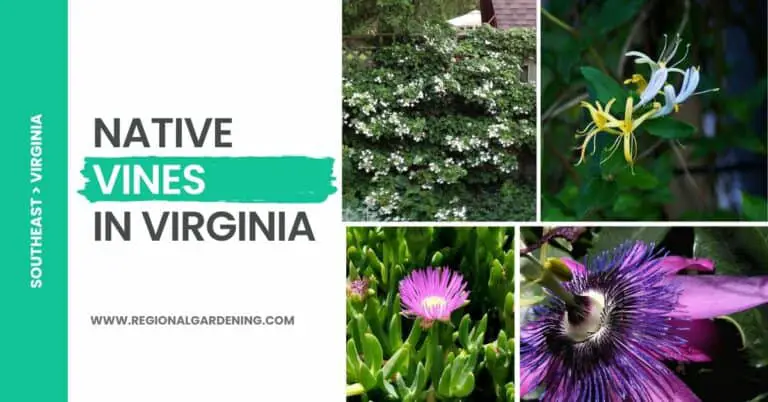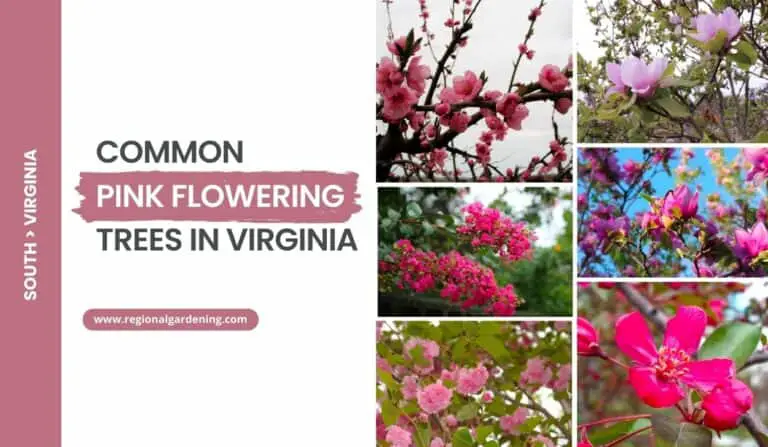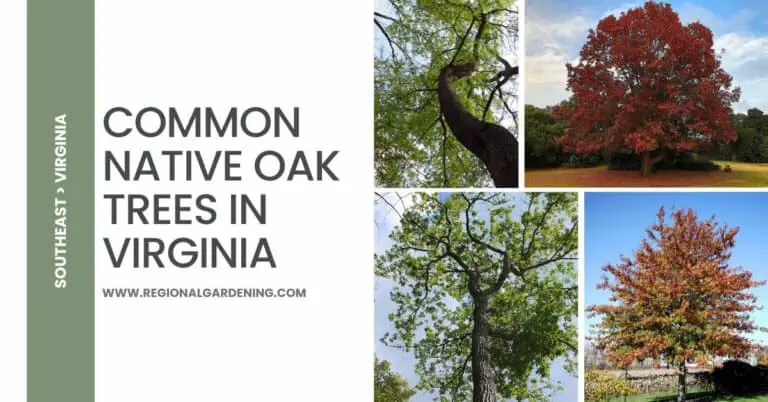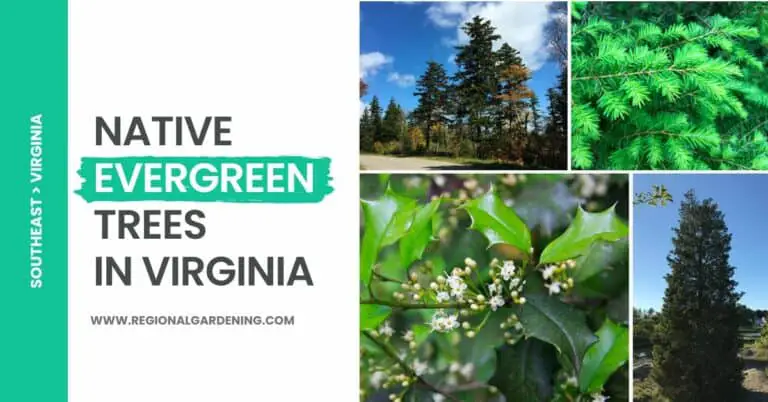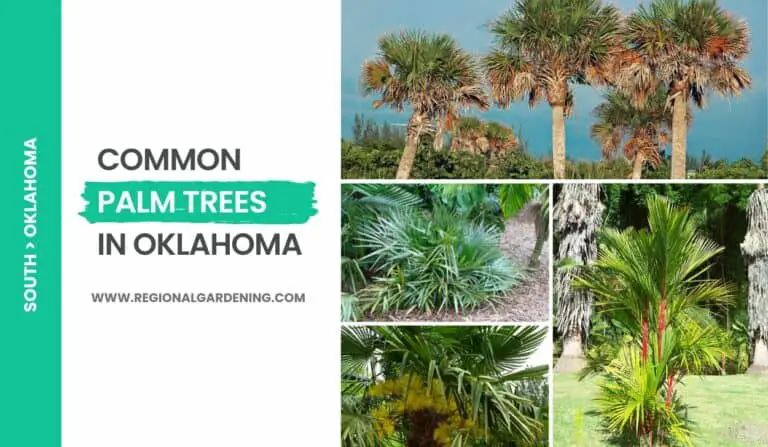6 Native Magnolia Trees In Georgia (Pictures & Identification)
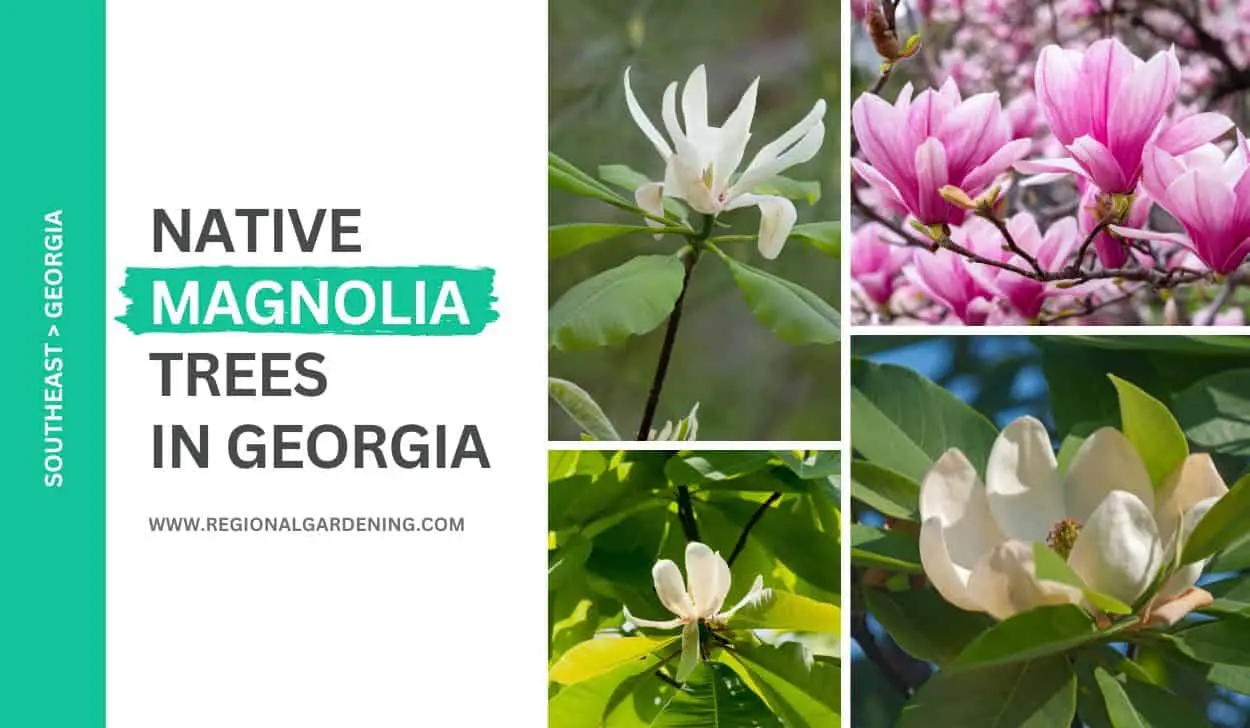
Magnolia is one of the most widely planted flowering trees in the United States. And, if you live in Georgia and want to add some amazing varieties of this tree, this is the article for you.
I will walk you through five of the most common native magnolia trees in Georgia. We cover everything from the tallest Southern Magnolia to the unusual bigleaf magnolia.
So, lets get started.
1. Southern Magnolia
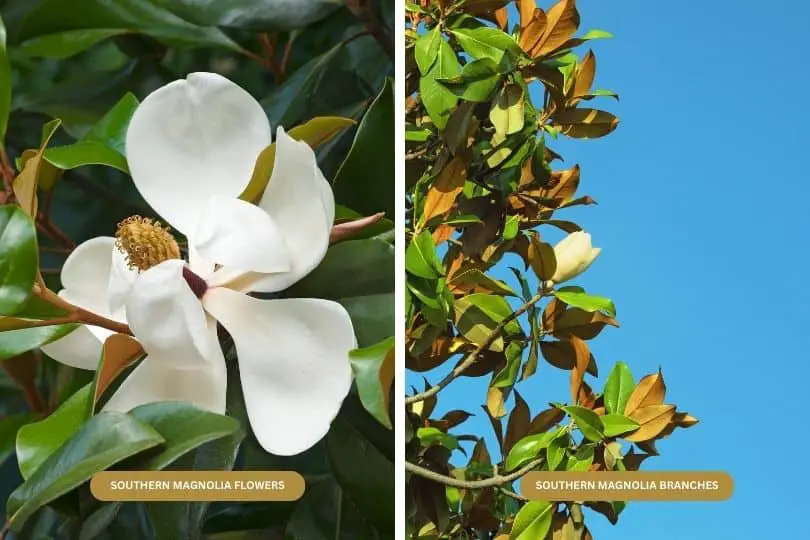
- Common Name: Southern Magnolia
- Scientific Name: Magnolia grandiflora
- Mature Height: 60 to 80 feet
- Native/Non-Native: Native
- Flowers/Cones: White flowers
- Uses: Ornamental
Southern Magnolia, often known as Evergreen Magnolia is one of the tallest magnolia trees in Georgia. It has the potential of reaching a height of 60 to 80 feet with a trunk diameter of 2 to 3 feet. The diameter can sometimes reach 5 feet. The tree has a pyramidal structure with evergreen foliage.
The leaves are elliptical in shape and range in size from 5 to 10 inches long and 2 to 3 inches wide, with pointy ends and smooth edges. The upper leaves are brilliant green, glossy, smooth, and leathery, whereas the bottom leaves might be green and smooth, rusty, or hairy.
Southern Magnolia has a huge, fragrant bloom as well as a reddish-brown bur fruit that is 3 to 4 inches long and 1 1/2 to 2 1/2 inches thick. Numerous vivid crimson seeds dangle from the fruit on slender threads.
Southern Magnolia bark is dark gray to brown or virtually black, smooth on the upper trunk and somewhat scaly on the lower trunk.
Southern Magnolia wood is sturdy, hefty, and creamy white in color, although it turns brown when exposed. This tree is used for decorative purposes as well as for creating baskets and crates.
Southern Magnolia is endemic to the United States’ coastal regions, where it can be found in marshes and along streams. Its lovely appearance and fragrant smell make it a popular option for gardens and landscaping.
2. Fraser Magnolia
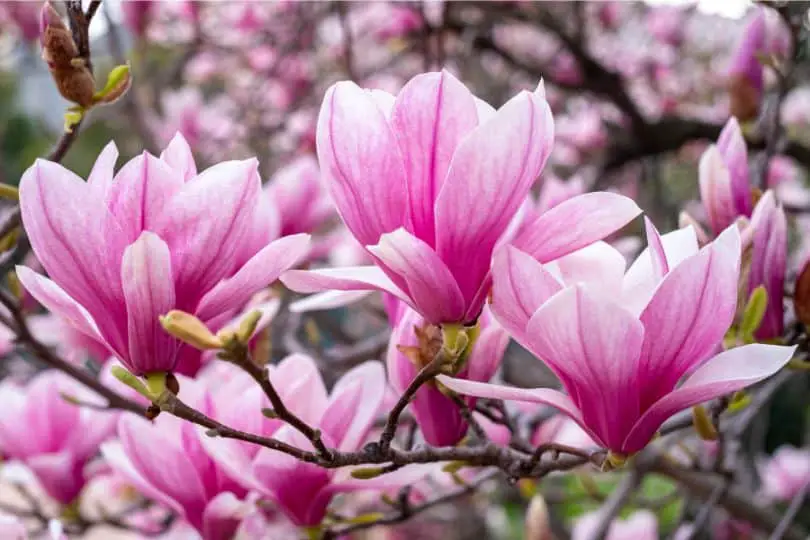
- Common Name: Fraser Magnolia
- Scientific Name: Magnolia fraseri Walt.
- Mature Height: 30 to 40 feet
- Native/Non-Native: Native to North America
- Flowers/Cones: red bur resembling a cucumber
- Uses: Ornamental
One of the most commonly seen magnolia trees in Georgia, the Fraser Magnolia, sometimes known as the Mountain Magnolia, is a North American deciduous tree. It prefers damp soils near streams and is mostly restricted to the mountains, though it can occasionally be found in the piedmont.
One of the most distinguishing features of Fraser Magnolia are its leaves, which may grow up to 12 inches long and 7 inches wide and have two ear-like lobes at the base. They have smooth borders and are broadest near the tip. They’re brilliant green and silky on both sides, and they’re grouped towards the ends of the branches.
The tree produces an oblong, smooth, brilliant red bur that looks like a cucumber and contains numerous scarlet seeds. Despite the fact that the wood of the Fraser Magnolia is of limited value, the tree is frequently utilized as an ornamental because to its distinctive appearance.
The Fraser Magnolia matures to a height of 30 to 40 feet with a trunk diameter of 12 to 22 inches. Its limbs are broad and frequently curved, and its bark is grayish-brown and smooth.
Finally, the Fraser Magnolia is a lovely North American tree. Its distinctive leaves and vivid red berries make it stand out, and its use as an ornamental tree attests to its beauty.
3. Umbrella Magnolia
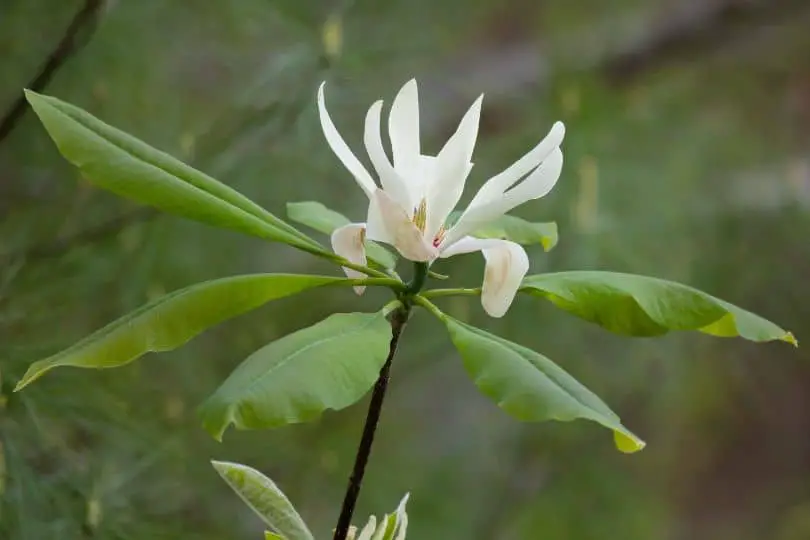
- Common Name: Umbrella Magnolia
- Scientific Name: Magnolia tripetala L.
- Mature Height: 30 to 40 feet
- Native/Non-Native: Native
- Flowers/Cones: Red bur fruit
- Uses: Ornamental
The Umbrella Magnolia is a fascinating tree that can grow up to 40 feet tall with a trunk that can be up to 1 1/2 feet in diameter. Its leaves, which may grow up to 20 inches long and 9 inches wide, are the tree’s most notable characteristic, and its shape earned the tree its name.
The leaves of the Umbrella Magnolia are rectangular, with the broadest point about above the middle and a bluntly pointed tip. In the spring and summer, they turn a bright green color and have fine hairs on the bottom.
Umbrella Magnolia bark is smooth and light gray in color. The tree bears oblong, red bur fruit that can grow to be up to 4 inches long. This tree’s wood is light, soft, close-grained, and weak, and it has no commercial use.
The Umbrella Magnolia can be found in North America’s mountains and high piedmonts. They are frequently found along streams and in moist soils.
While the wood of this tree is rarely used economically, it is appreciated as an ornamental tree due to its distinctive leaves and appealing appearance.
4. Bigleaf Magnolia
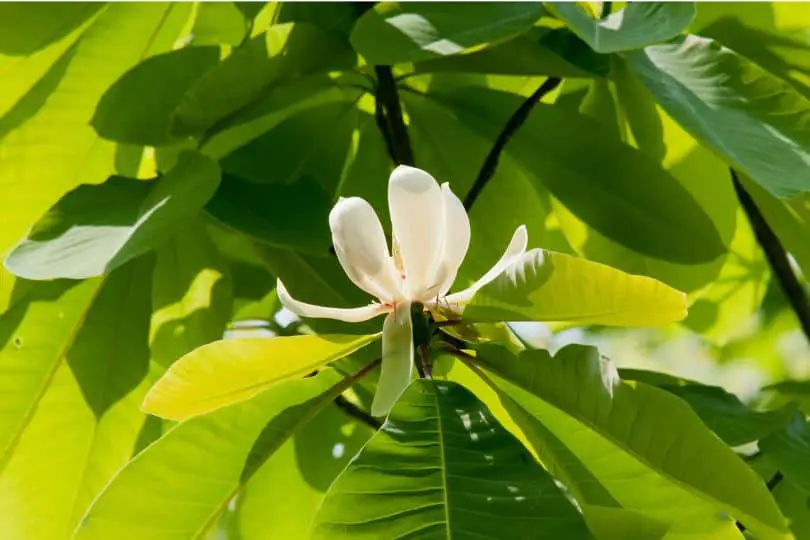
- Common Name: Bigleaf magnolia
- Scientific Name: Magnolia macrophylla
- Mature Height: Reaches an average height of 30 to 40 feet
- Native/Non-Native: Native to Ohio to Florida, Arkansas to Louisiana
- Flowers: Ivy-colored flowers
- Uses: Ornamentral & shade tree.
The bigleaf magnolia, as the name suggests, has enormous leaves that can grow to be 36 inches long! This tree is a member of the Magnolia family and is endemic to much of the United States. It requires well-drained soil and can reach heights of 30 to 40 feet.
The flowers of the tree are a lovely cream color and can grow to be a foot wide. The blooms bloom throughout the summer and have a pleasant scent. The fruit of the tree is extremely appealing, as it is rose-colored and roughly 3 inches long. It is persistent and appealing to birds.
Despite its attractiveness, due to its coarse appearance, this tree is not widely used in residential areas. It can, however, be seen as a specimen or shade tree in parks or other big places.
It’s worth noting that the Bigleaf magnolia is prone to ice and wind damage, and its enormous leaves degrade slowly.
If you want to see a Bigleaf magnolia, go to Tight Hollow in Kentucky, where the national champion tree can be found. This incredible tree was 108 feet tall and spread 42 feet. If you’re ever in the region, it’s definitely worth a visit.
5. Sweetbay Magnolia
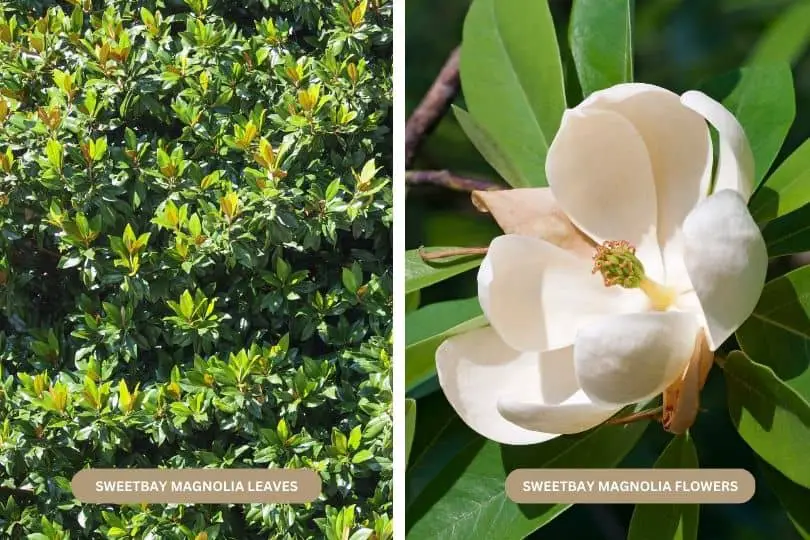
- Common Name: Sweetbay
- Scientific Name: Magnolia virginiana L.
- Mature Height: 30 to 40 feet
- Native/Non-Native: Native
- Flowers/Cones: Small bur
- Uses: Wood of little commercial value
Another United States native variant, sweetbay Magnolia, can reach heights of 30 to 40 feet and has a narrow-topped head at the top of its stem that is normally 1 1/2 to 2 feet in diameter.
Sweetbay leaves are deciduous, which means they fall off in the spring of the second season. They are oblong, with smooth borders and a more or less rounded apex.
The leaves’ upper surface is bright green, lustrous, and smooth, while the under surface is pale or virtually white and hairy. Sweetbay’s bark is light gray and smooth. When grown, the tree produces a tiny bur that can be drab, brownish red, or practically green.
Sweetbay wood is soft and light brown with a red hue. It has little commercial value, though.
Sweetbays are typically found on moist soil and in swamps throughout the coastal plain and as far north as Gwinnett County in the piedmont. Take a moment to admire a Sweetbay if you ever come across one!
Similar Articles
- Native Oak Trees in Georgia
- Native Pine Trees In Georgia
- Native Dogwood Trees In Georgia
- Native Hickory Trees In Georgia
- Native Maple Trees In Georgia
- Native Tupelo Trees In Georgia
- Native Plum Trees In Georgia
- Native Willow Trees In Georgia
- Native Ash Trees In Georgia
- Native Elm Trees In Georgia
- Native Cottonwood Trees In Georgia
- Native Cedar Trees In Georgia
- Native Birch Trees In Georgia
- Common Purple Trees In Georgia
- Common Cypress Trees In Georgia
- Common White Flowering Trees In Georgia
Magnolia Trees In Georgia – Credible Sources
The Regional Gardening team makes sure that the information in our articles is accurate by only using sources that are known to be trustworthy. Some of these sources are peer-reviewed journals from government agencies, well-known universities, and scientific research organizations.
- Georgia Native Plant Society
- College Of Agricultural & Environmental Sciences, University Of Georgia
- Native Plants Books, Georgia Native Plant Society
- Georgia Forestry Commission
- Native Plants Of North Georgia, University Of Georgia
- Tree Care, Georgia Tree Council


